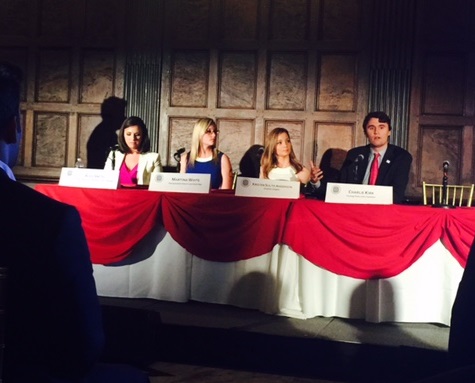The History and Consequence of Ohio Cities’ Development Patterns
By Raquel Jones, GOPC Intern
Cincinnati, Cleveland, and Columbus have more in common than their location in the buckeye state. Together, these three metropolises have the largest concentration of the state’s population. Unfortunately, they also have the highest levels of neighborhood inequality in terms of income, education, homeownership rate, and housing values. In Worlds Apart, a new report released by the Urban Institute in June of this year, an index intended to calculate this form of inequality was developed and utilized, and ultimately supported this conclusion. The neighborhood inequality score, indicating the overall degree of inequality within each region, is calculated by subtracting the average neighborhood advantage score (a composite score of the four indicators mentioned above) of the areas’ bottom census tracts from the average of its top census tracts. Columbus tops off with a neighborhood inequality score of 5.54, while Cleveland and Cincinnati are not far behind with scores of 5.26 and 5.17, respectively.
Accordingly, all of these cities are geographically segregated, with the majority of the poor inhabiting the urban core and those who are more privileged residing in the suburbs. However, in two of these municipalities, suburban-like development exists within city limits, disbanding the conventional association of cities with urban development. This is the case in both Columbus and Cincinnati. In Columbus, the suburbs account for sixty percent of the households in the municipality, while Cincinnati is forty-nine percent, or nearly half, suburban.* Although the wholly urban city of Cleveland is an outlier in this examination of city density, it remains evident that Ohio cities are heavily suburbanized and at the same time greatly segmented.
To be able to fully analyze and comprehend the present inequality and density within these regions, it is necessary to put it into a larger context within the history of suburban sprawl and the discriminatory practice of redlining, which carved up cities into desirable (i.e. white), average and undesirable (neighborhood of color) areas. The end of the Second World War signified the start of a new era as new cultural norms and demographic changes diffused across the nation. The baby boom that followed the war led to an increase in the number of families seeking housing who were aided by house-buying subsidies included in the GI Bill. This led to the development of new subdivisions on the outskirts of metropolitan areas, many which had restrictive covenants restricting the sale of homes to desirable (i.e. white) residents inserted into the subdivision’s incorporation articles and often transferring over to the deed of the house. The growing popularity and affordability of the automobile facilitated the feasibility and creation of these car-dependent societies. Furthermore, gas taxes subsidized major road construction projects, including the interstate highway system, providing a faster commute between suburban regions and the downtown area.
These developments also coincided with the “white flight” movement that embodied the large-scale migration of white people of various European descents out of the urban core and into suburban or exurban communities. Businesses and industries followed suit, resulting in a rapid decline in the number of jobs available to those who remained in the core of the city and expansive urban decay. The minority groups within the inner city had little hope of escaping poverty, as it was near impossible for residents of these areas to obtain mortgages or loans from banks, who unfairly refused to provide their services to these people. This continued until the passage of The Home Mortgage Disclosure Act of 1975, and it was not until the Community Reinvestment Act was passed by Congress in 1977 that the harsh effects of the so-called redlining began to be reversed.
Tomorrow, I will discuss the possibilities latent in our cities and the opportunities to overcome and transform this history.
*Percentages were calculated by dividing the number of households within zip codes determined to be suburban by an analysis of its development density out of the total number of households in the zip codes with half or more of its territory within city limits.


